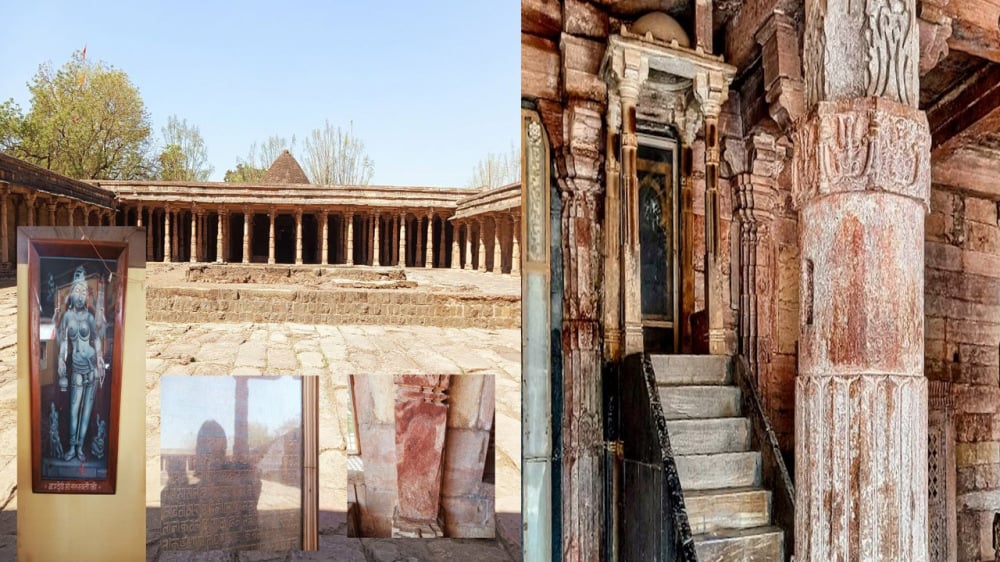
The survey report of Dhar Bhojshala has arrived. ASI has presented it before the Indore Bench of Madhya Pradesh High Court. This report is about 2000 pages long. In which many important explanations have been made. In this survey which went on for 98 days continuously, the team has found many evidences. Which has been included in the report and presented in the court.
ASI's lawyer Himanshu Joshi presented the survey report in the High Court on Monday, July 15. All parties have been instructed not to share this report with the media. So lawyer Himanshu Joshi just said that the report is of 2 thousand pages and he cannot say anything more than this. It is being told that more than 1700 evidences found during the survey and excavation have been included in this report.
What did Hindu-Muslim parties say?
As soon as the survey report reached the court, Hindu party petitioner Ashish Goyal claimed that on the basis of the survey done in front of us, we are saying that Bhojshala Bhawan belongs to the period of Raja Bhoj, this will prove that it was constructed in the year 1034. He claimed that ASI has found many ancient statues in this survey.
Meanwhile, Qazi Waqar Sadiq of Dhar city said that he has received information about the report presented in the High Court. But, the Supreme Court has already directed that no action can be taken at the High Court level on the ASI report. According to Sadiq, even though the High Court will hear the case on July 22, the decision will be taken by the Supreme Court.
Let us tell you that while hearing the case on April 1, 2024, the Supreme Court had said that whatever be the result of the ASI survey of the canteen, no action should be taken without its permission.
Is Dhar's canteen a temple or a mosque?
Bhojshala is an 11th century monument protected by the Archaeological Survey of India. Hindus and Muslims have different religious beliefs about it. Hindus consider it a temple dedicated to Vagdevi (Goddess Saraswati), while Muslims consider it a Kamal Maula Mosque.
According to the Dhar district website, King Bhojdev of the Parmar dynasty established a university in Dhar for the study of Sanskrit. It is called Bhojshala, where a statue of the Hindu goddess Saraswati was installed.
The refectory was built between the 14th and 15th centuries
The structures in this complex belong to different periods of history. Apart from the structures that are mainly from the 12th century, the complex also houses Islamic tombs that are said to have been built between the 14th and 15th centuries. The complex houses the tomb of the Chishti Sufi saint Kamal-al-Din. For this reason, the complex is also called Kamal Maula Mosque.
At present, the Bhojshala or Kamal Maula Mosque is a monument of national importance protected by the Archaeological Survey of India (ASI). Under an agreement, Hindus are allowed to worship here on Tuesdays and Basant Panchami. While Muslims are allowed to offer namaz on Fridays. On other days, the complex is open to visitors.
The court ordered the ASI to conduct a survey
Hindu Front for Justice had filed a petition in the Madhya Pradesh High Court for a scientific survey of the temple-mosque complex. The demand was that the Bhojshala complex be handed back to the Hindus and people of the Muslim community be stopped from offering namaz there.
Hearing this, the Indore bench of the Madhya Pradesh High Court ordered the ASI to conduct a scientific survey. In its order, the bench asked for a detailed scientific investigation of the complex using the carbon dating method, so that the age of the structures located above and below the ground can be ascertained. The court also said that the survey proceedings should be done in the presence of two representatives from each side. Instructions were also given for photography and videography of the survey.
 look news india
look news india